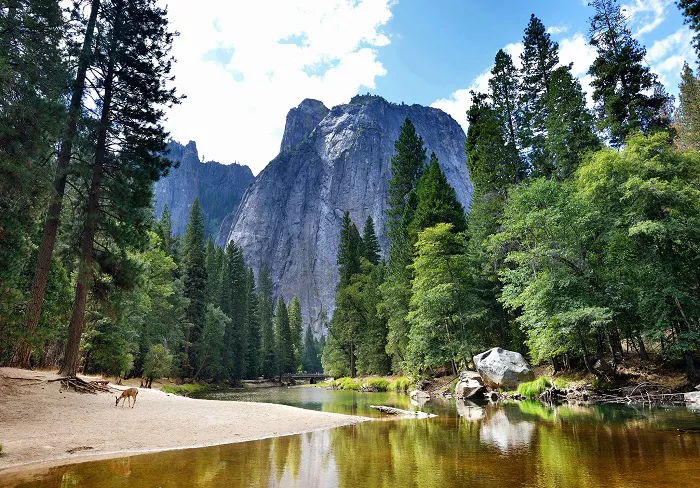India boasts 107 national parks, offering diverse ecosystems and rich biodiversity for nature enthusiasts. Among these, six have been designated UNESCO Natural World Heritage Sites due to their exceptional natural significance. Additionally, one national park holds the distinction of being a UNESCO Mixed World Heritage Site, recognized for both its natural and cultural importance.
Kaziranga National Park, Assam
Declared a UNESCO Natural World Heritage Site in 1985, Kaziranga National Park is famed for its population of one-horned rhinoceroses. The park encompasses varied habitats including wetlands and grasslands, sheltering a wide array of wildlife such as tigers, elephants, and numerous bird species.
Keoladeo Ghana National Park, Rajasthan
Formerly known as Bharatpur Bird Sanctuary, Keoladeo Ghana National Park has been a UNESCO Natural World Heritage Site since 1985. It serves as a critical wintering ground for migratory waterfowl, notably Siberian cranes, attracting birdwatchers and naturalists worldwide.
Manas Wildlife Sanctuary, Assam
Located along the India-Bhutan border, Manas Wildlife Sanctuary was designated a UNESCO Natural World Heritage Site in 1985. Characterized by dense forests, grasslands, and river systems, it provides habitat for Bengal tigers, elephants, and several endangered bird species, contributing significantly to India’s biodiversity.
Nanda Devi and Valley of Flowers National Parks, Uttarakhand
Nanda Devi National Park and the Valley of Flowers National Park were inscribed as UNESCO Natural World Heritage Sites in 1988 and 2005, respectively. Nanda Devi, home to India’s second-highest peak, is noted for its alpine meadows and rugged peaks, while the Valley of Flowers is celebrated for its vibrant alpine flora.
Sundarbans National Park, West Bengal
Recognized as a UNESCO Natural World Heritage Site since 1987, the Sundarbans comprises the largest mangrove forest in the world, situated in the Gangetic Delta. It is renowned for the Royal Bengal tiger, saltwater crocodiles, and diverse bird species. The park plays a vital role in coastal protection and biodiversity conservation.
Great Himalayan National Park, Himachal Pradesh
Designated a UNESCO Natural World Heritage Site in 2014, the Great Himalayan National Park features pristine high-altitude landscapes including alpine meadows, riverine forests, and towering peaks. It supports rare and endangered species such as snow leopards, Himalayan brown bears, and Himalayan monal pheasants.
Khangchendzonga National Park, Sikkim
Khangchendzonga National Park, inscribed as a UNESCO Mixed World Heritage Site in 2016, encompasses Mount Khangchendzonga—the third highest peak globally. The park contains glaciers, alpine grasslands, and a rich diversity of flora and fauna, including threatened species like the red panda, snow leopard, and musk deer.
These parks collectively underscore India’s commitment to preserving its natural heritage and offer invaluable opportunities for ecological study and sustainable tourism.


